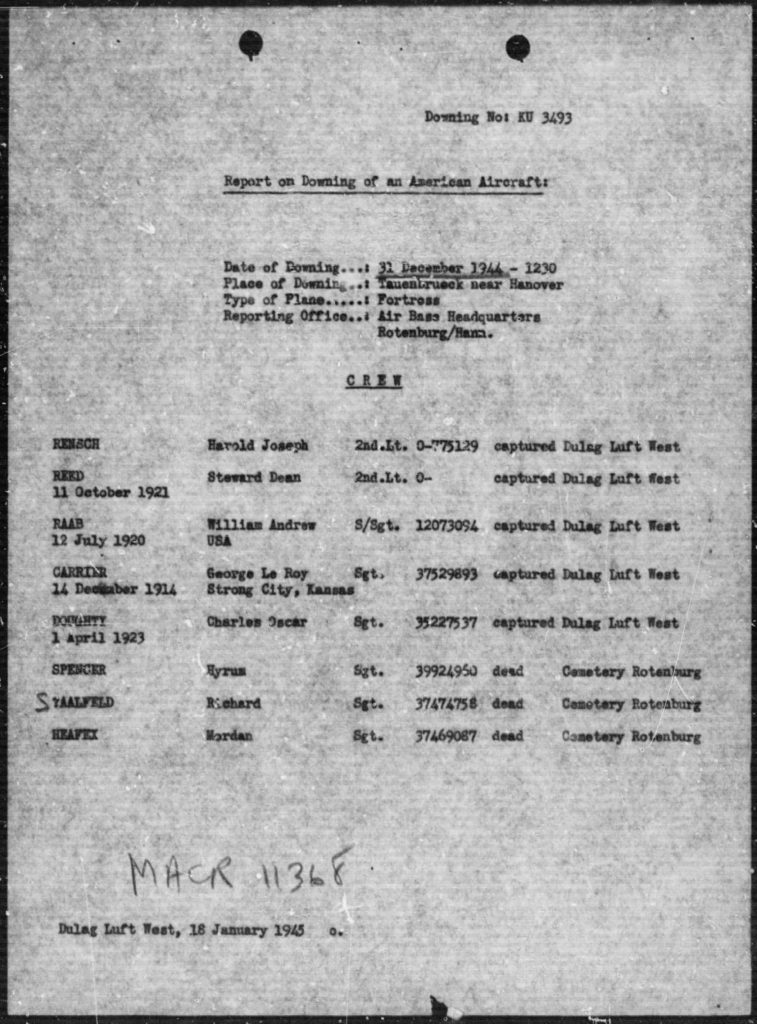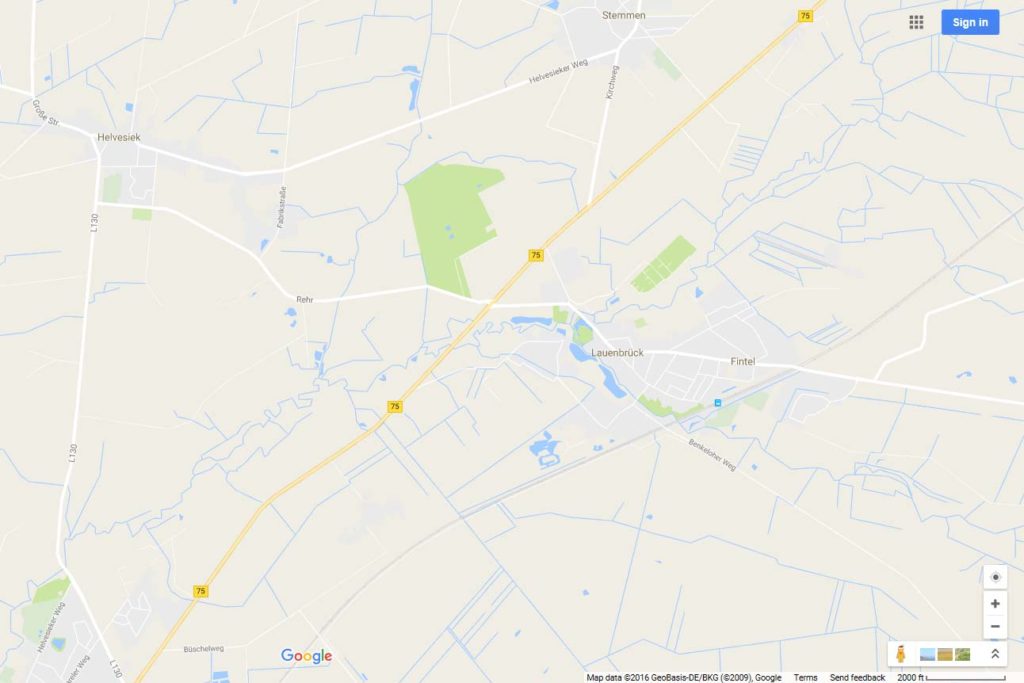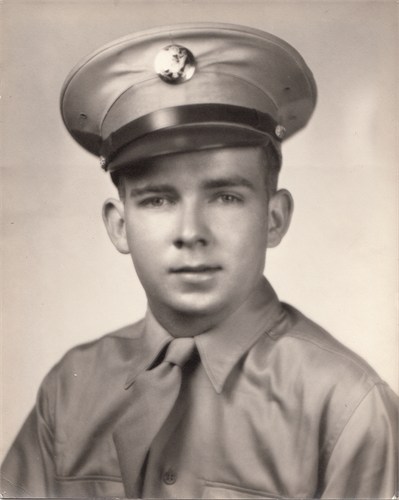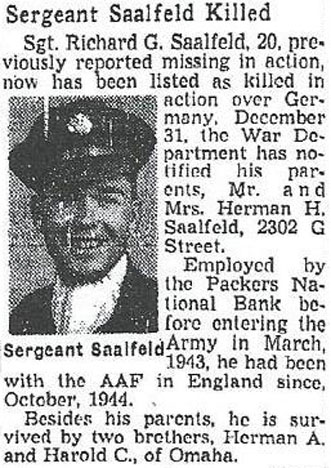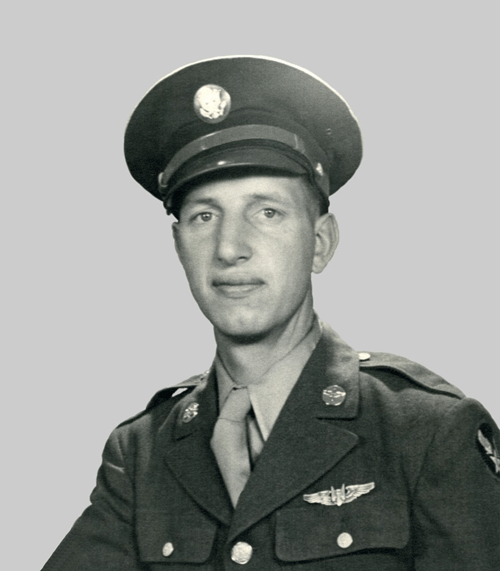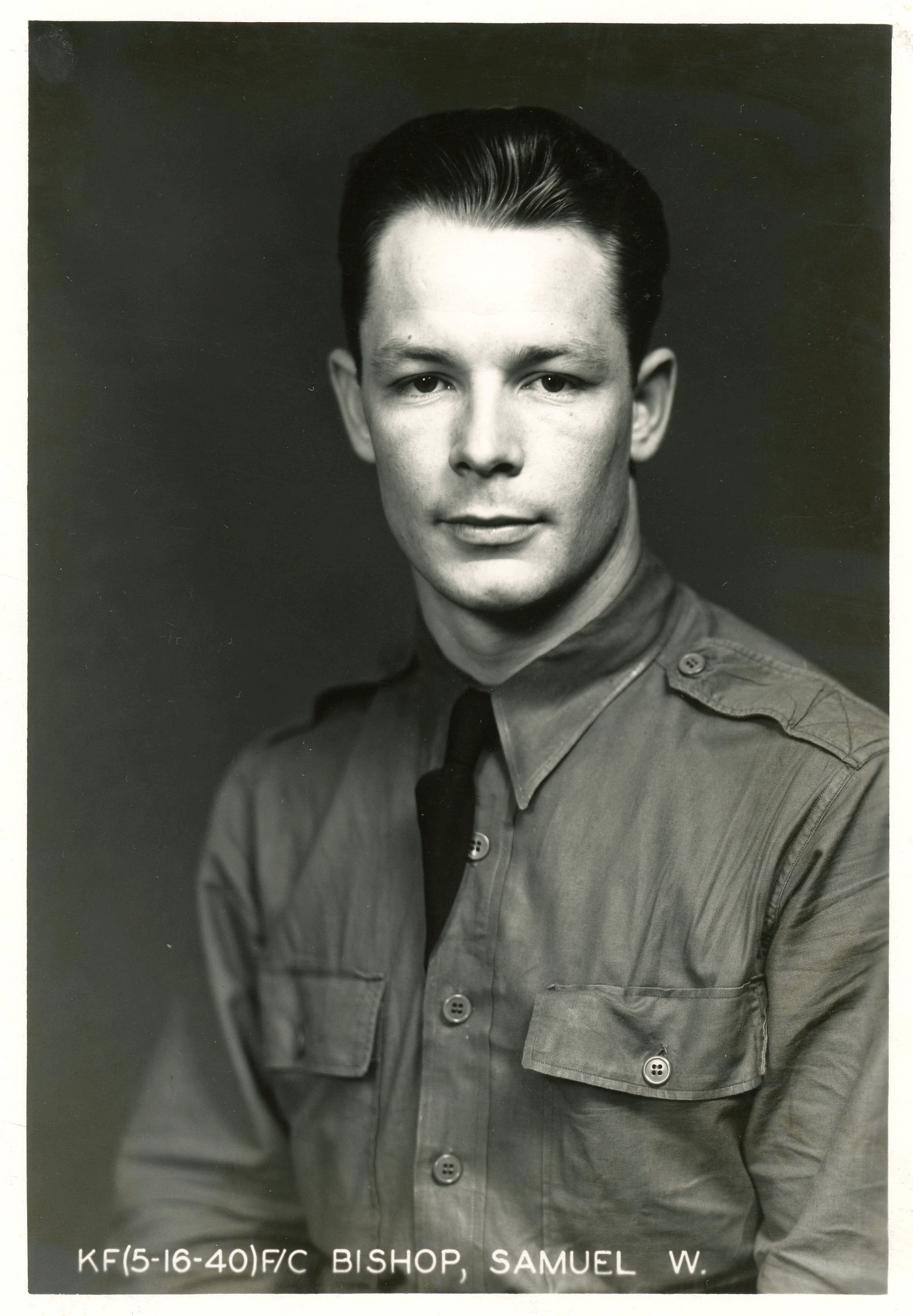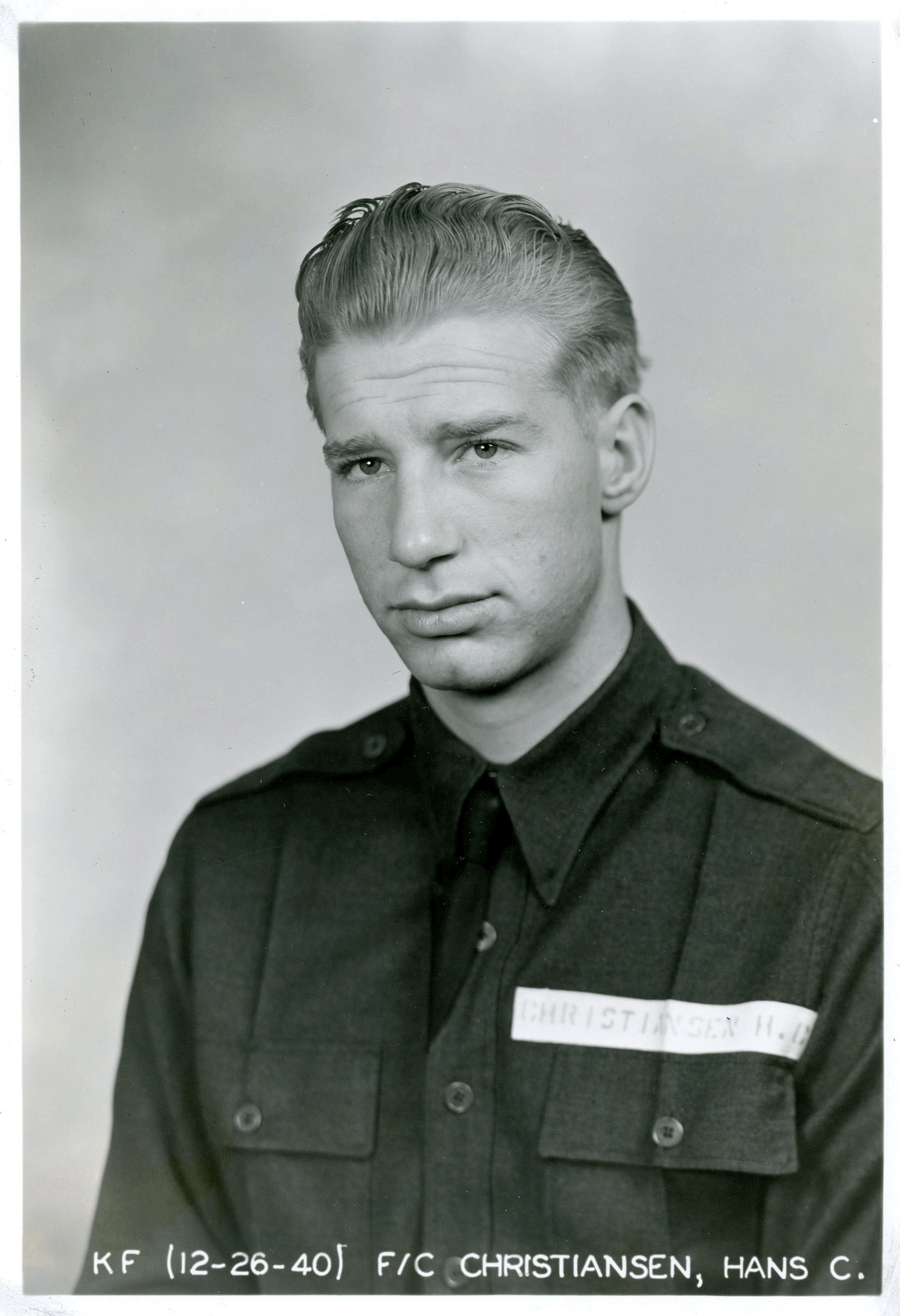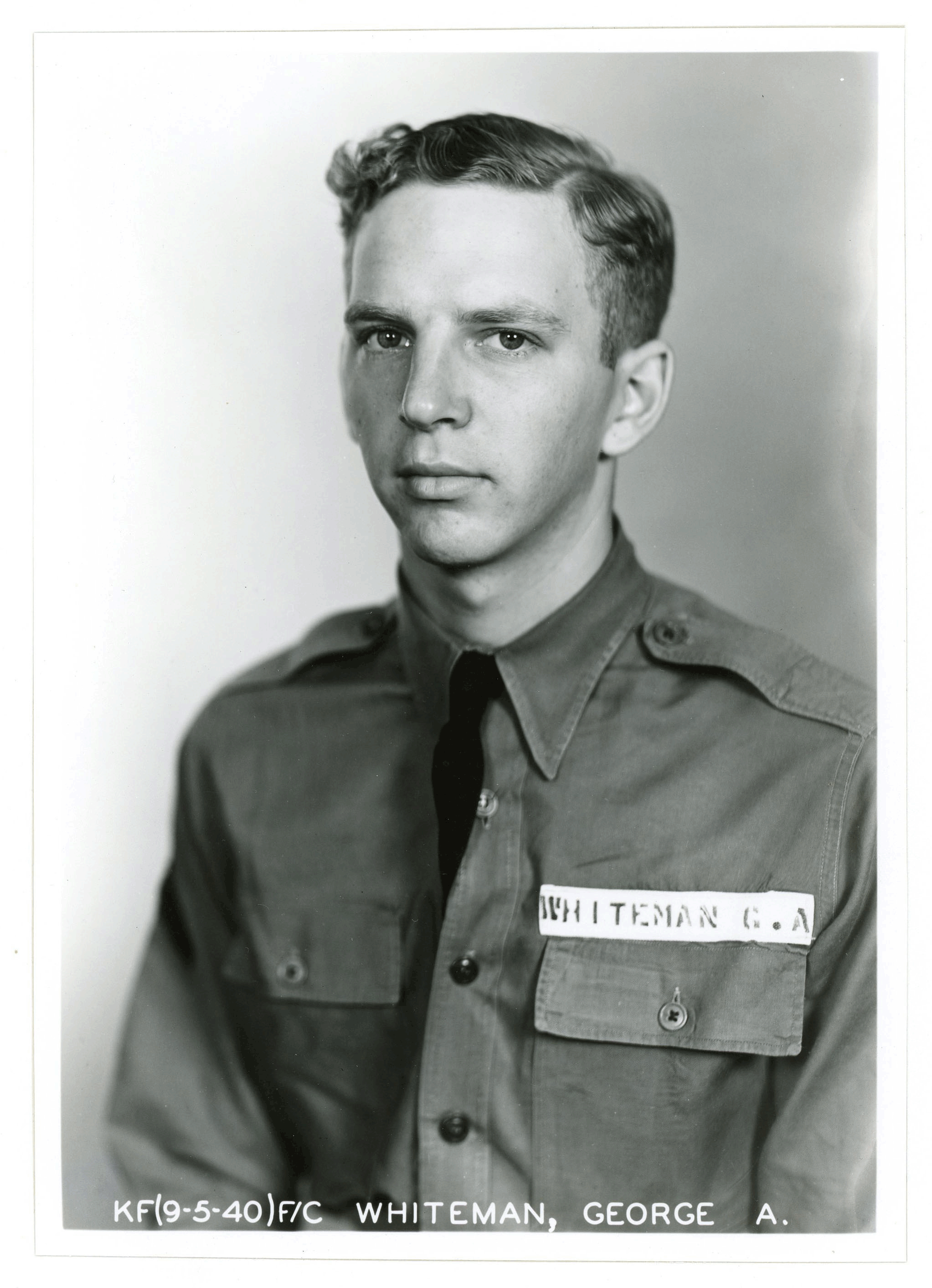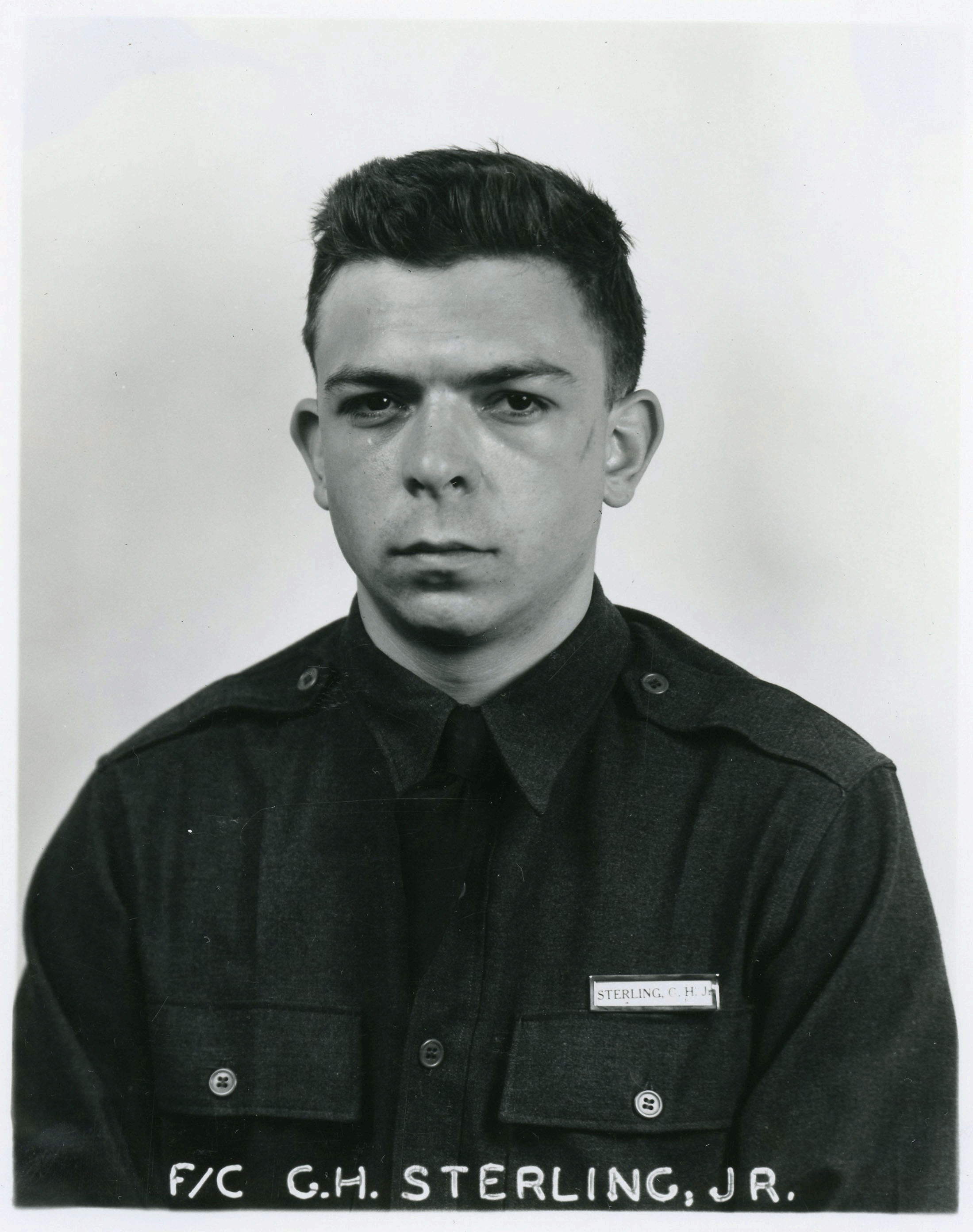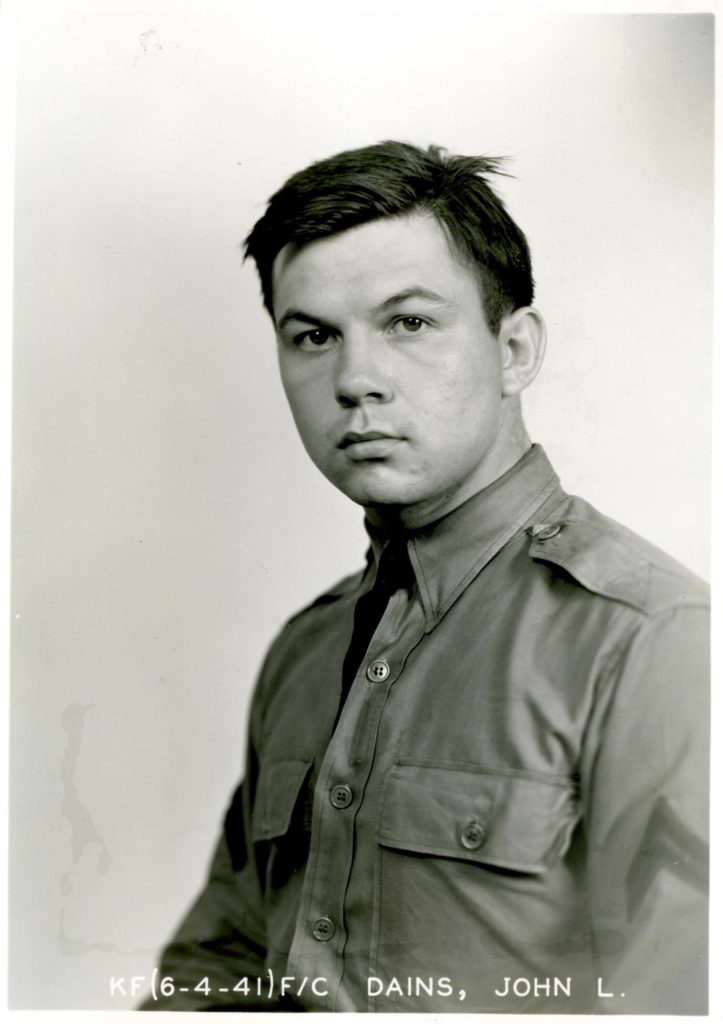Photographs of military aircraft taken during aerial missions are legion, having existed in all forms of print media since the First World War. With the advent of the internet, such images can now be found as instantaneously as they are created.
The commonality of such pictures, regardless of the conflict, country, or activity, is that by their nature the great majority of such images – especially those from the early and mid-twentieth century – capture action and events occurring outside of the aircraft or platform from which the photographer is situated. That aspect of aerial photography is so natural and taken-for-granted that it hardly bears mentioning.
That is, until one comes across the opposite: A picture of activity within a military airplane during a combat mission.
Such an image is the subject of this discussion.
In an earlier blog post, photographic images were presented of a P-51D Mustang fighter (“Chicago’s Own”, of the 354th Fighter Group) which was crash-landed near Niederkirchen, Germany, on December 1, 1944 by Captain Gordon T. McEachron. These images are found in German Luftgaukommado Report “J 2525”, at the United States National Archives, in College Park, Maryland.
That post included two “Meldung über den Abschuss eines US-amerikanischen Flugzeuges” (Notification About the Shooting Down of a U.S. Aircraft) forms, showing how the German armed forces recorded information about downed American military aircraft, and, their crews. One of the two forms, in J 2525, is an example of how single-seat fighter aircraft were documented.
The other from, from Luftgaukommando Report KU 3493 (KU being an acronym for Kampfflugzeug Unterlagen – “combat aircraft documentation”) covers a B-17G Flying Fortress, and shows how multi-crew aircraft were documented. The crew list in KU 3493 appears below, and will bring us to the photograph that is the topic of this post.
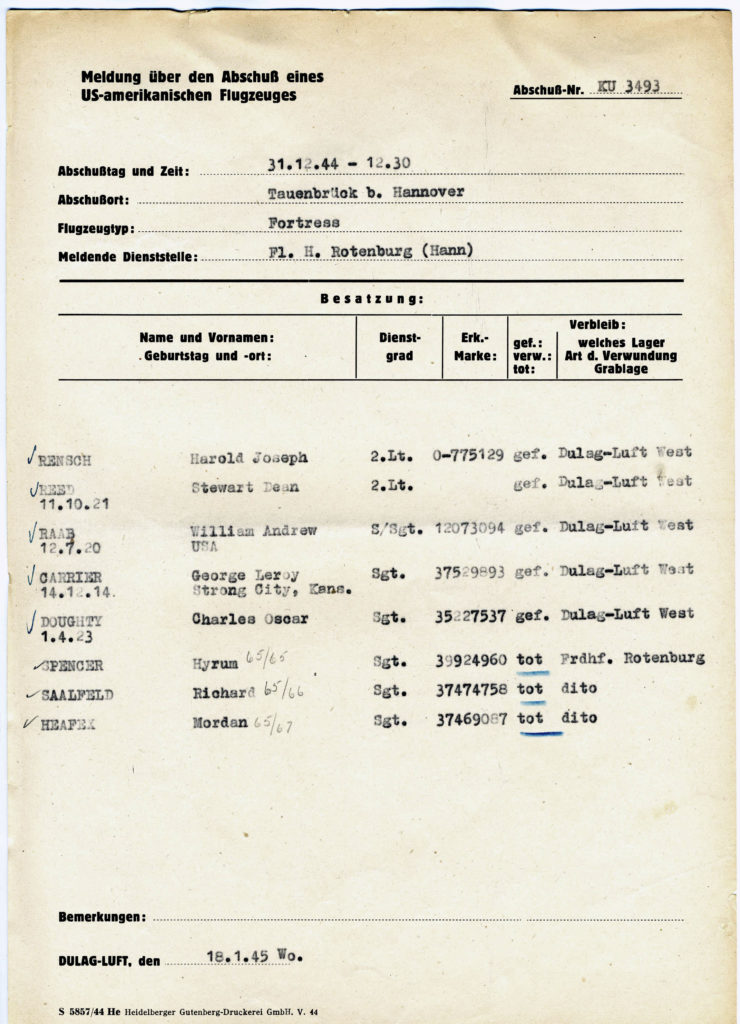 Crew list in “original” KU Report
Crew list in “original” KU Report
Crew list in translated KU Report, as seen in MACR 11368
KU 3493 was filed for B-17G Flying Fortress 42-97215 (erroneously listed in MACR 11368 as “43-97215”), “BG * J“, of the 334th Bomb Squadron, 95th Bomb Group, which was piloted by 2 Lt. Stewart D. Reed, and shot down during a mission to Hamburg on December 31, 1944.
MACR 11368 notes that there were no direct witnesses to the plane’s loss, but presents the following account, derived from S-2 files, for the incident: “B-17G 43-97215 [sic] piloted by 2 Lt. Reed was seen to be hit by enemy fighters from 6 to 8 minutes after “bombs away”. The attack was made from 5 to 7 o’clock high and out of the sun. The aircraft was hit on the first pass on the #3 engine causing it to catch fire. The pilot endeavored to put out the fire but failed to do so. The aircraft went in a slow spiral under fairly good control. One chute was seen before the aircraft was lost from sight at 53-20 N, 09-30 E at 1153 hours.”
KU 3493 gives no information specifying where the individual crewmen were actually captured or recovered. However, the document gives four place names – all generally similar – denoting the area where the plane crash-landed, and, the general locality of all events relevant to the loss of 42-97215. These are “Lauenbrueck near Hanover”, “Lauenbrueck 15 km [from] Rothenburg”, “Lauenbrueck-Hollege-Vahlde bei Rotenburg”, and “Lauenbruch (Lauen bridge) on Reichstrasse, Hamburg / Bremen”.
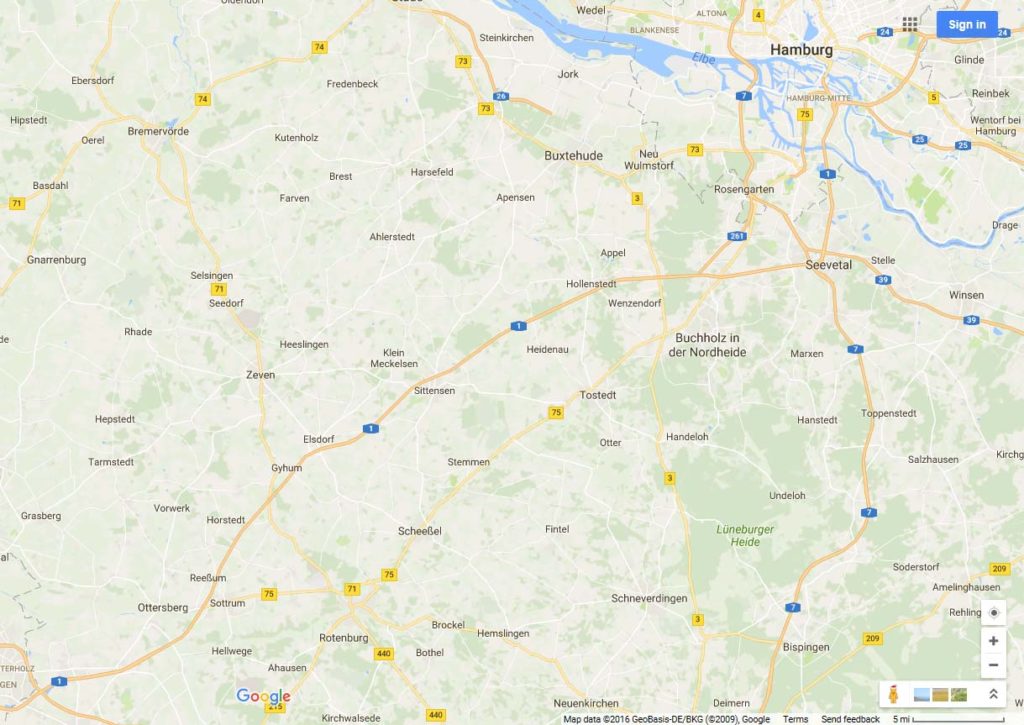 Google map of Hamburg, Rotenburg, and nearby localities.
Google map of Hamburg, Rotenburg, and nearby localities.
Besides Lt. Reed, the other eight men in the plane’s crew were:
Co-Pilot: 2 Lt. Harold Joseph Rensch
Navigator: F/O Anthony A. Marnik, Jr.
Nose Gunner (Togglier?): Sgt. Charles Oscar Doughty
Flight Engineer: S/Sgt. William Andrew Raab
Radio Operator: Sgt. George LeRoy Carrier
Ball Turret Gunner: Sgt. Morgan Joseph Heafey
Waist Gunner: Sgt. Richard G. Saalfeld
Tail Gunner: Sgt. Hyrum Lamar Spencer
Four of these men – Heafey, Marnik, Saalfeld, and Spencer – did not survive the mission. The others were captured and imprisoned, returning to the United States after the war’s end.
A review of postwar accounts by the survivors reveals that Carrier, Doughty, Marnik, Raab (wounded in the arm by flak), Rensch, and Saafeld bailed out, while Lt. Reed crash-landed the plane with Heafey and Spencer still aboard.
Heafey was instantly killed by a direct hit on the ball turret. Spencer, severely wounded, died shortly after landing. Carrier suggested that he could have been saved had he received immediate medical attention.
The fates of Marnik and Saalfeld present a mystery.
Saalfeld, after bailing out, was seen alive, in mid-air, by Rensch. His name (along with those of Heafey and Spencer, and the surviving crew members) does appear in the crew list recorded in KU 3493. Rensch suggested that he, “May have been captured by radical civilians & slain”.
Marnik was not seen after the crew bailed out, and his fate was still under investigation in August of 1945, indicated in a statement filed by Doughty with the Adjutant General’s Office. Therein, Doughty reported, “Plane hit by fighters. The plane immediately went into a flat spin. I saw Marnik jump from the plane. After he jumped he was never heard of again. I believe that Marnik might have become unconscious from lack of oxygen after he bailed out at over 22,000 ft and there by not open [sic] his chute. He has not been heard of since.”
Document “131615” within KU 3493 states that Marnik was “recovered dead” at Burg / Sittensen – almost six north-northwest of Lauenbrueck – on December 31, at 12:15, about twenty minutes after 42-97215 was shot down. Though this document gives his serial number and name, neither his rank nor any other information is listed. Oddly, his date of burial – at Gross-Sittensen – is noted as having occurred nearly two weeks later: On February 12, 1945. This explains the absence of Marnik’s name from KU 3493, which was filed on January 18, 1945.
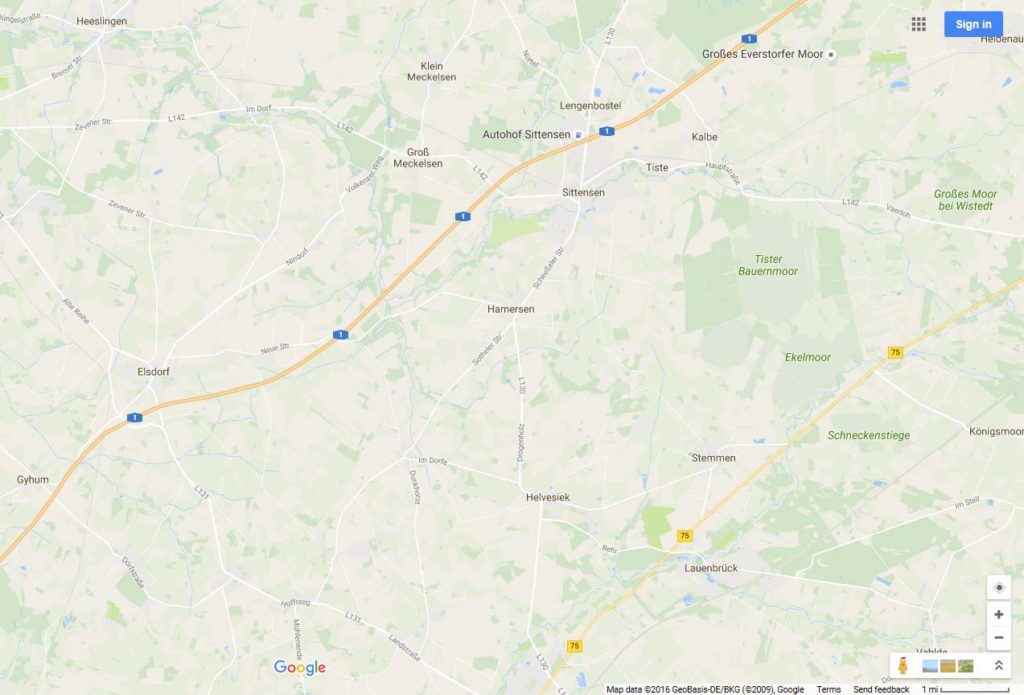 Google map of area of Sittensen, Lauenbrück, and nearby localities.
Google map of area of Sittensen, Lauenbrück, and nearby localities.
Given the limited and cryptic information in the MACR, more information about what actually befell Saalfeld and Marnik might be found in the IDPFs (Individual Deceased Personnel Files) for these men. If possible war crimes had been investigated, then Case Files for these men may exist within the records of the Office of the Judge Advocate General (NARA Records Group 153).
But about the men of 42-97215…
Like many (but certainly not all) MACRs filed for crews of multi-place aircraft, MACR 11368 gives the names and addresses of the crew’s next of kin. These are:
Those, Who Survived
Pilot: 2 Lt. Stewart Dean Reed (POW, Stalag Luft I)
Born October 11, 1921
Margaret C. Reed (wife), 1402 Dodson St., San Pedro, Ca.
Dr. Claude L. and Mildred Reed (parents), Wakefield, Ks.
Stewart Reed died on July 12, 2009, as reported in the San Francisco Chronicle of July 15 of that year.
Co-Pilot: 2 Lt. Harold Joseph Rensch (POW, Stalag Luft III)
Elizabeth D. Rensch (mother), Makoti, N.D.
Nose Gunner (Togglier?):
Sgt. Charles Oscar Doughty (POW, Stalag Luft III)
Agnes M. Doughty (mother), 30 Baker St., Norwalk, Oh.
Flight Engineer:
S/Sgt. William Andrew Raab (POW, Stalag Luft III)
William L. and Catherine Raab (parents), 59 Seyle Terrace, Rochester, N.Y.
Sgt. William Raab in the Rochester Times Union, May 29, 1945.
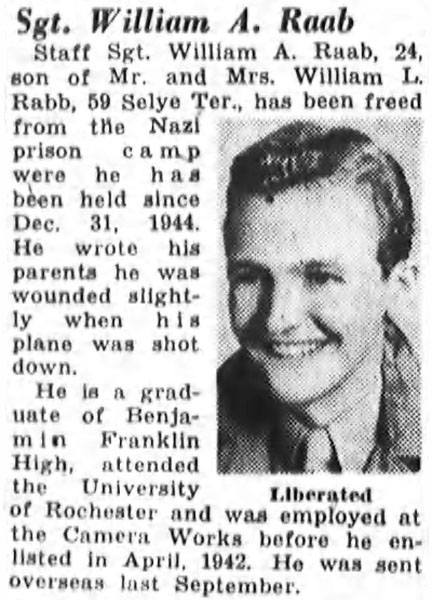 Sgt. William Raab in the Rochester Times Union, May 29, 1945.
Sgt. William Raab in the Rochester Times Union, May 29, 1945.
Radio Operator: Sgt. George LeRoy Carrier (POW, camp unknown)
Lola M. Carrier (wife), 806 North Gordy St., Eldorado, Ks.
Those, Who Gave All
Navigator: F/O Anthony A. Marnik, Jr. (Born 8/18/20)
Anton and Sophie (Eltman) Marnik (parents), Jean and Raymond (sister and brother)
4138 North Lavergne Ave., Chicago, Il.
Place of Burial: Saint Adalbert Catholic Cemetery, Niles, Il.; Section 52, Block A, Lot 3.
Buried September 7, 1949, as reported in Chicago Tribune of September 1.
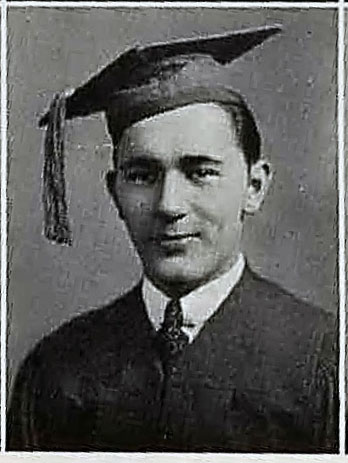 Anthony A. Marnik, Jr., in the DePaulian (De Paul University yearbook) for Class of 1938.
Anthony A. Marnik, Jr., in the DePaulian (De Paul University yearbook) for Class of 1938.
____________________
Ball Turret Gunner: Sgt. Morgan Joseph Heafey (Born 8/23/22)
John C. and Helen Cecelia (Gillespie) Heafey (parents)
3825 South 25th St., Omaha, Ne.
John C. Heafey, Helen C. (Heafey) Kinnear, Thomas E. Heafey (brothers and sister)
Place of Burial: Holy Sepulchre Cemetery, Omaha, Ne.
Waist Gunner: Sgt. Richard G. Saalfeld (Born 5/3/24)
Herman H. and Lillian F. Saalfeld (parents), Harold C. and Herman A. Saalfeld (brothers)
2302 G St., Ohama, Ne.
Place of Burial: Saint Mary’s Cemetery, Omaha, Ne.
Tail Gunner: Sgt. Hyrum Lamar Spencer (Born 10/28/19)
Glenda (Winget) Spencer [later Smith] (wife), Ronald H. Spencer (1941-1943) and Kenneth Austin Spencer (sons)
Box 157, Monroe, Ut.
Austin Jabez and Hannah Elizabeth (Price) Spencer (parents); Nine siblings (four sisters and six brothers)
Place of Burial: Aurora Cemetery, Aurora, Ut.; Block 7, Grave 5; Buried June, 1949
A Captured Moment, Captured
Now, the subject of this post: One photograph.
The image is rather small: about two by three inches.
It’s not entirely in focus.
It’s overexposed.
There is no information recorded upon it – whether on the print itself, or its reverse side. It’s “anonymous”.
There is no information about it within KU 3493. It’s simply present among the documents contained in the report.
But, precisely because it’s not a “professional” image, it has an aura of mystery (well, a small mystery) that evoke questions about its origins: Who was the photographer? When was it taken? What kind of camera was used?
Some observations:
The picture was taken by someone immediately behind the pilot and co-pilot, probably situated in the space between the B-17’s dorsal turret and pilots’ seats.
The pilot’s right hand rests on the throttles. His head slightly is turned to the right, while the co-pilot’s head is slightly turned to the left. Details of the top of the instrument panel, the ceiling mounted instruments, ceiling light, and wiring between the upper windows, are clearly visible.
Both men are wearing external radio headsets over their flight helmets; especially evident for the pilot.
From the pattern of light and shadow on the pilot’s left arm, and especially the glare upon the right windshield and obscuring the co-pilot’s face, it seems that the plane is flying towards the sun.
Given that the picture is entirely undamaged and unmarked, I assume that it was confiscated by the Germans from Lt. Reed himself, Rensch, Doughty, Raab, or Carrier, after their capture. If I were to venture a guess, I would suggest it was taken by Sgt. Charles O. Doughty. (But, that is only a guess.)
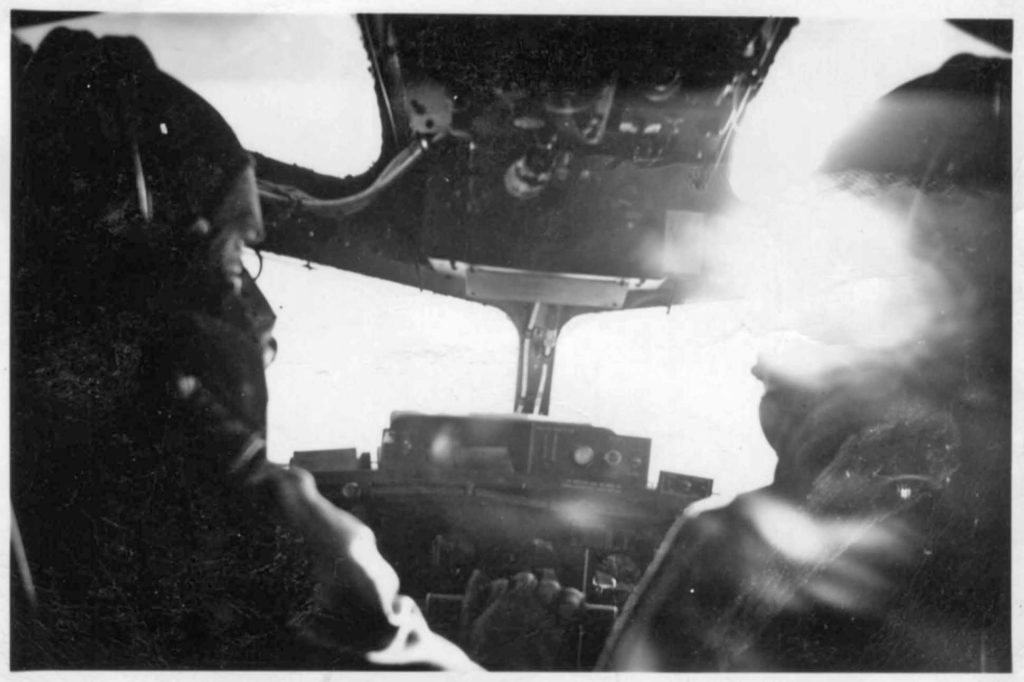 Somewhere over Europe, seventy-two years ago.
Somewhere over Europe, seventy-two years ago.
This photo is strikingly reminiscent of a depiction of a B-17 pilot at the controls of his bomber that appeared in John Muirhead’s 1986 book Those Who Fall.
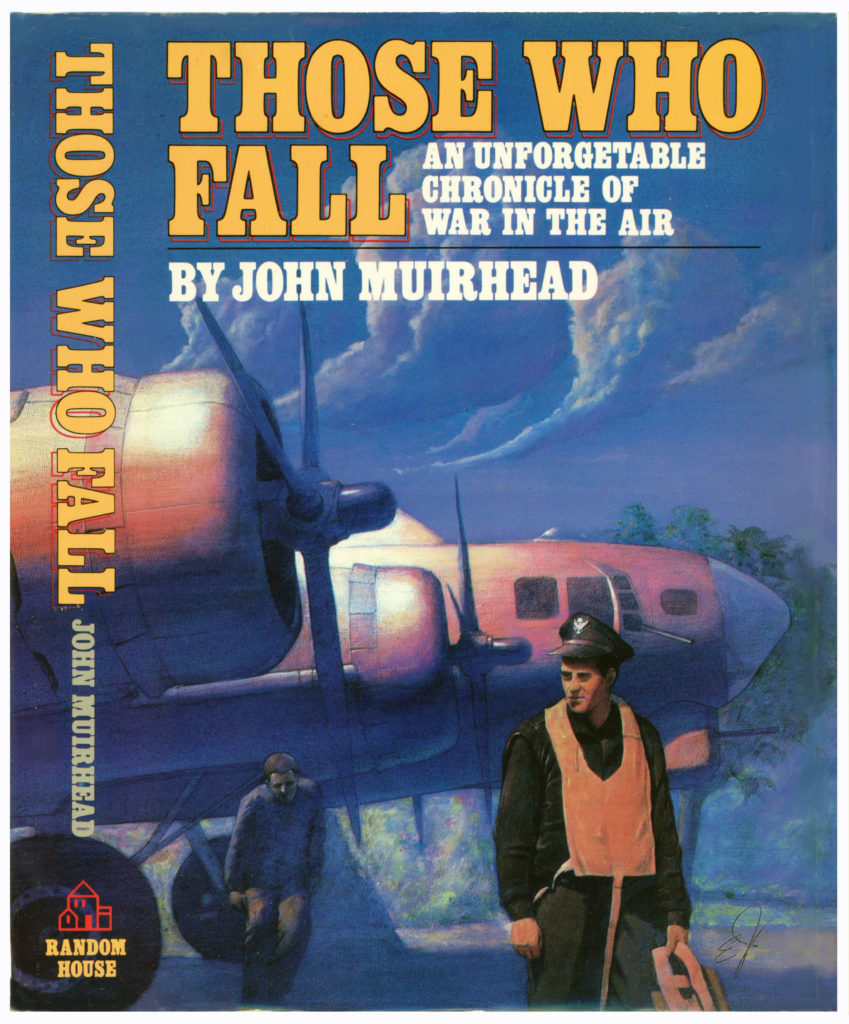 The book (cover by Eric Joyner) is a memoir of Muirhead’s experiences as a Flying Fortress in the 32nd Bomb Squadron of the 301st Bomb Group, a Bomb Group assigned to the 15th Air Force’s 5th Bomb Wing. It encompasses the time from his arrival at the 301st’s base at Lucera, Italy, in February of 1944, through June 23, 1944, when his plane and crew were shot down on a mission to Ploesti (covered in MACR 16203), and concludes with his liberation from Bulgarian captivity in September of that year.
The book (cover by Eric Joyner) is a memoir of Muirhead’s experiences as a Flying Fortress in the 32nd Bomb Squadron of the 301st Bomb Group, a Bomb Group assigned to the 15th Air Force’s 5th Bomb Wing. It encompasses the time from his arrival at the 301st’s base at Lucera, Italy, in February of 1944, through June 23, 1944, when his plane and crew were shot down on a mission to Ploesti (covered in MACR 16203), and concludes with his liberation from Bulgarian captivity in September of that year.
Published by Random House in 1986, his book merits very high praise. The quality of writing is excellent, equaled by the depth of the author’s observations about the complexities of human nature; relationships between and among his crewmen, comrades, commanders, and Italian civilians; the seeming randomness of human fate during war; history, human nature, and “life” in general.
Some of the names in the book may be pseudonyms, some characters may be “composites” of different personalities, and the accounts of some combat missions may be based on a combination of memory, anecdote, and personal impressions, along with historical records. No matter. These qualities do not detract from the book’s literary and historical worth.
Fifteen sketches by Susan Coons, in pencil or charcoal, are interspersed throughout the book, and depict personalities, combat, and life at 301st’s Italian base at Lucera. These have no captions, the reader being left to infer such from nearby or related text.
One sketch image is particularly compelling, and is a fitting counterpart to KU 3493’s anonymous photo: It depicts a B-17 pilot, right hand resting on the throttles of his aircraft, as sunlight reflects off his windshield. 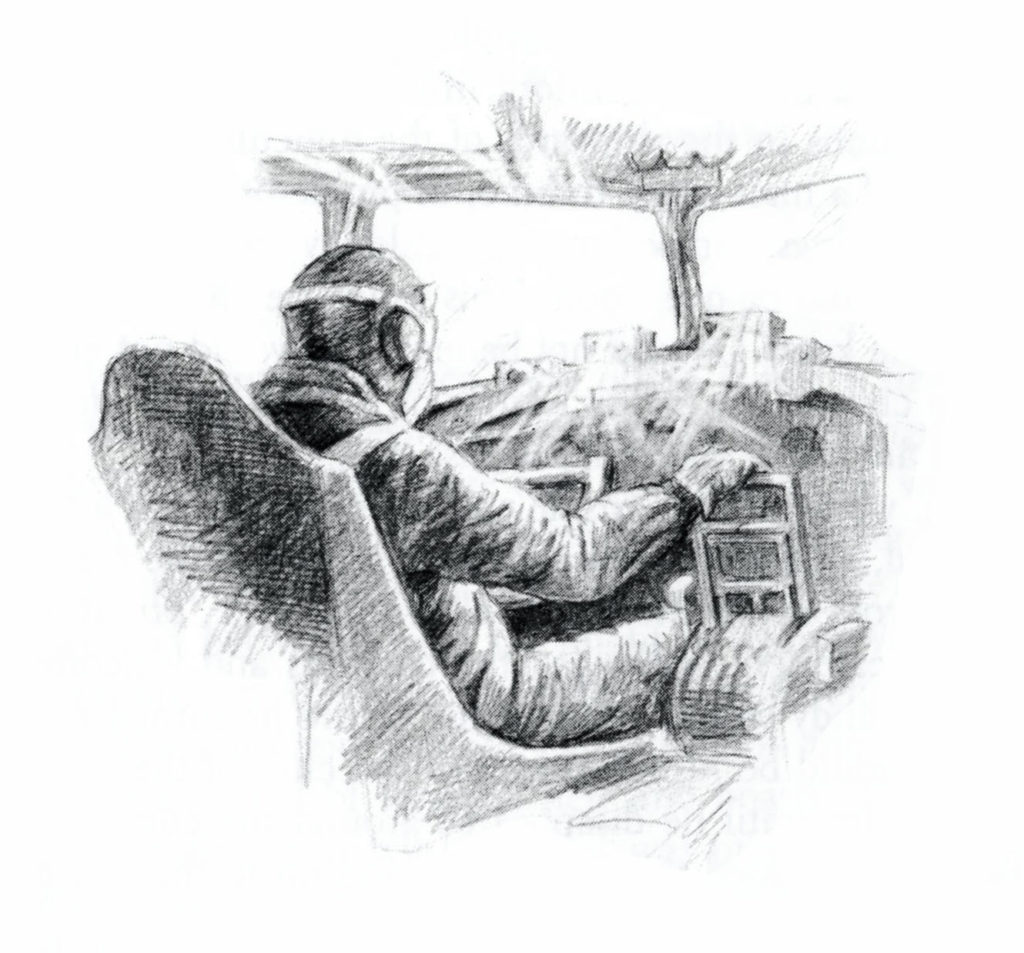 Like the pilots in the photo – seen at an unknown time and unknown place somewhere over Europe (or perhaps even earlier, over the continental United States?) – the pilot in Susan Coons’ sketch is piloting his aircraft into the sun, towards an unknown destination.
Like the pilots in the photo – seen at an unknown time and unknown place somewhere over Europe (or perhaps even earlier, over the continental United States?) – the pilot in Susan Coons’ sketch is piloting his aircraft into the sun, towards an unknown destination.
Like the crew of aircraft B-17G #215, he is flying into history.
As are we all – whether earthbound, airborne, or between – each in our own quiet way.
References
Books
Freeman, Roger A., and Osborne, David, The B-17 Flying Fortress Story, Arms & Armour Press, London, England, 1998.
Muirhead, John, Those Who Fall, Random House, 1986, New York, NY.
Rust, Ken C., Fifteenth Air Force Story, 1976, Historical Aviation Album, Temple City, Ca.
Biographical Information
Heafey, Morgan J., biographical information by Loren Bender, at http://www.findagrave.com/.
Marnik, Anthony A., Jr., information and photograph from DePaulian 1938 (De Paul University Yearbook), accessed through Ancestry.com.
Marnik, Anthony A., Jr., biographical information by “Russ C.”; photograph of tombstone by Mary Arvidson, at http://www.findagrave.com/.
Raab, Sgt. William A., Rochester Times Union, May 29, 1945, accessed via Fulton History website, at http://fultonhistory.com/Fulton.html.
Reed, Stewart D., obituary and biographical material at http://www.legacy.com/obituaries/sfgate/obituary.aspx?n=stewart-dean-reed&pid=129752191
Saalfeld, Richard G., biographical information by Loren Bender and “SRGF”, at http://www.findagrave.com/.
Spencer, Hyrum L., biographical information and photographs by his son, Kenneth Austin Spencer, at http://www.findagrave.com/.
Archival Documents
KU (Kampfflugzeug Unterlagen) Report 3493
United States National Archives – Collection of Foreign Record Seized – Record Group 242: “Records of Luftgaukommandos: German Reports of Downed Allied Fighters and Other Aircraft
Report KU 3493: (At) Records Group 242, Entry 1022, Shelf Location 190 / 14 / 9-12 / 1-5 (Box 306)
Also see: https://research.archives.gov/id/64379
